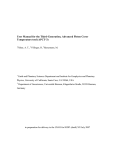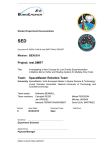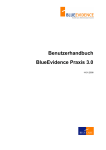Download ZARM Drop Tower Bremen General Information
Transcript
ZARM Drop Tower Bremen General Information Version 28. April 2000 Drop Tower Operation and Service Company ZARM FABmbH Am Fallturm D-28359 Bremen Phone: +49-(0)421-218-4078 Fax: +49-(0)421-218-3889 e-mail: [email protected] FAB How to read this paper This paper shall serve for both, as a general introduction into microgravity research, when firstly approaching it, and as an introduction into the Bremen drop tower facility. As your experiment can only be integrated if in accordance with the given boundary conditions, it is mandatory to refer to the Drop Tower Users Manual. When reading this paper is your first approach to a drop tower experiment, it is recommended to read it carefully from the beginning. Later you may refer to the related chapters. As our aim is to serve the scientists needs as best as possible, please contact us as soon as possible. Keep in mind, that many items of the technical equipment have been implemented upon former users requests. As the drop tower facility is a cutting edge facility for microgravity research, it is under constant development. Even though we try to be downward compatible with any new development, this can not be guarantied in any case. Therefore, for most actual informations please refer to our web-page: http://www.zarm.uni-bremen.de/download.htm or directely contact: Drop Tower Operation and Service Company ZARM FABmbH Am Fallturm D-28359 Bremen Phone: +49-(0)421-218-4078 Fax: +49-(0)421-218-3889 e-mail: [email protected] 2 Content 1 The Microgravity Research Facilities ...........................................................................4 1.1 List of Micro-g Facilities – Comple mentary not Competitive.................................4 1.2 How to choose the appropriate Facility....................................................................4 1.3 How we can support you............................................................................................6 2 The Bremen Drop Tower ................................................................................................9 2.1 What is ZARM ..............................................................................................................9 2.2 The Site .........................................................................................................................9 2.3 Laboratories and Workshops...................................................................................12 2.4 Accomodation.............................................................................................................12 3 1 The Microgravity Research Facilities 1.1 List of Micro-g Facilities – Complementary not Competitive Novespace Airbus NASA KC 135 e.g. NASA DC 9 Reduced gravity time 20 s micro-g level (frequency dependent) 10e-2 - 10e-4 manual access yes automatic experiment operation recommended data uplink/downlink no Campaignes 2/year Flexibility to hardware changes low on-site support no NASA Glenn (USA) INTA Madrid (E) ZARM Bremen (D) JAMIC (J) MG-LAB (J) 2.2 - 10 s 10e-5 - 10e-6 no (10s yes) mandatory yes daily high yes Mini-TEXUS TEXUS MAXUS minutes 10e-4 - 10e-5 no recommended yes 1 - 2/year no no EURECA weeks - months 10e-5 no mandatory yes (intermittant) not regular no no Ma nn ed Sp ac eS tati on Un m an ne dO rbi tal Fa cili tie s So un din gR oc ke ts To we rs Dr op Pa rab olic Fli gh t Air cra fts The following table compares the most common microgravity research facilities in its important details: MIR IML ISS hours - months 10e-3 - 10e-5 yes recommended yes (intermittant) not regular low yes Tab. 1: Comparison of Facilities 1.2 How to choose the appropriate Facility Referring to Tab. 1 it is easy to imagine that there is no general way to find the appropriate facility for your experiment. Therefore a decision matrix must be elaborated for any individual experiment. The first order aspect is the micro-g level needed. Zero-g is a singularity that cannot realy exist. As gravity is a fundamental interaction with infininte distance of reach connected to mass, any experiment is exposed to residual accelerations – at least induced by the mass distribution of the experiment itself. In terms of mathematics, microgravity research is approaching a division-byzero problem. This singularity problem is the reason why you can´t extrapolate e.g. from macro-g (in a centrifuge) via 1-g towards zero-g. A monotoneous function for this never exist. This would request for the best micro-g quality achievable. On the other hand, the question on the response time of your experiment needs to be answered. The answer is based upon the inertia of the process you focus on. The level of residual accelerations must be lower than the acceleration necessary to affect the process of interest. This can be calculated in terms of response frequencies. When the time scale of the process of interest is longer than one period at a given g-level, the facility is overqualified. But this should be the case, at least by one order of magnitude. It is easy to imagine, that e.g. in terms of fluid physics the driving force is temperature or concentration difference – the inertia can be defined 4 through density and viscosity. Therefore, combustion- or high temperature plasma experiments are very sensitive to residual accelerations as temperature differences are high and the counteracting density is low. This the more, as the time scales of the incorporated chemical processes are comparably short. (By the way, this is the reason why combustion research is one of the major branches at drop towers.) In contrast, transport processes in liquids, driven by temperature gradients are of longer time scales due to the higher density. This does not account e.g. for crystal growth experiments where the time scale of the solidification rate is long as temperature gradients are usually adjusted as low as possible. In order to more accurately classify your experiment, you must refer to the related numbers of similarity. A second order aspect is the microgravity time. Of course, in seconds experiment time you cannot whatch plants growing. But when long term experiments tell you that plants show a gravipercepsis, you do not necessarily learn why. In contrary, when you investigate on single cells – process time scales become short. The keyword behind is: scaling. The more you scale down your experiment, the shorter the time scales of the observed process become and by the way, the more sensitive against residual accelerations the experiment gets. On the other hand, downscaling is often limited by boundary conditions, e.g. via interactions with container surfaces or radiative walls more and more affecting the process. As an example: near equilibrium crystal growth experiments require less time, the smaller the sample and the growth lenght is. But the effect of liquid / gas or even worse liquid / wall interactions increase with decreasing sample size. Again, similarity numbers have to be applied to appropiately design your experiment. The third order aspect is related to costs. Reflecting on what has been shown before, when long term experiments are inevoidable the best facility might quite often be the unmanned orbital system. But, as being the most expensive one (any mission is exclusively designed in accordance with the experiments requirements and in the Space Station age the number of missions will approach zero), a step-by-step approach is indispensable. Even though it doesn´t make sens to perform experiments in an inapproriate environment, a stepby-step approach is always possible and a direct access to orbital facilities does not exist. Easy access is only possible to Parabolic Flight aircrafts and Drop Towers. Parabolic Flight campaigns allow for conducting numerous experiments at low costs. There is no real limitation in mass and power consumption and hardware on a laboratory status can be used. Even if you might not get reproducible results due to the high level of residual accelerations and its jittering you get experience with the setup, the measurement devices and you can get a feeling for the area of parameters to more carefully investigate on. Besides, reasonable scientific results are not excluded in many cases. A clever approach often is, to design the Parabolic Flight experiment in accordance with the manual, as Drop Tower experimenting will be the next step when you don´t necessarily need a long term facility. Viceversa, a Drop Tower hardware can always be mounted to a Parabolic Flight aircraft. As Drop Towers offer the best micro-g quality achievable, this is a facility for serious research. But the number of drops is limited to max. three drops / day (30 micro-g periods / day or so in a Parabolic Flight aircraft). As you will see by reading the manual, experimental hardware to be used in a drop tower is very close to laboratory standards. There are only very few 5 requirements a setup must match, that are based upon the necessity to withstand the deceleration forces. Even in the case, that long term experiments are necessary, the experimental setup developments can benefit from preliminary test of hardware functionability by performing drop tower tests. 1.3 How we can support you The idea behind the Bremen drop tower is to make a technical university background available for you during your stay at ZARM. Laboratories, workshops, scientific personnel is prepared to assist you in any case of troubles or questions rising besides your field of expertise that might occure during a campaign. We want you to imagine that you, coming along with delicate instrumentation, are treated as a guest and our aim is to do everything possible to make your stay successful and satisfactory. The Bremen drop tower is the only microgravity facility worldwide on a technical university campus. Therefore you will never be alone with your technical problems. How to design a drop tower experiment Even though microgravity research might be in fame of high technology, „think simple“ should be the guideline of hardware realization. Simple in two ways: ensure yourself of your idea being able to answer basic- instead of complex questions and try to design your hardware and measurement equipment as simple as possible. Don´t worry, there will still be enough chances for failure. „First Aid“ In terms of approaching drop tower experimenting, you are strongly encouraged to contact us as soon as possible. At least looking onto details, there are often various ways to turn an idea into hardware. As there is quite a lot of experience at ZARM available to your hands, please take advantage of this. You can never compete with us in terms of whether your question or our answer is more stupid. Be sure that any information you give us on your idea or its attempt of realization is strictly kept confidential as long as we are not encouraged through yours to act else. Support for Funding Most of drop tower users are coming from universities or research labs. As long as your research is public fundet, your national space agency should be the right partner to contact. In cases your idea or project matches or overlaps with European research programs, ESA could be the right partner to be addressed for covering the drop tower use expenses. 6 As the main customer of ZARM-FABmbH is the German Aerospace Center, DLR, who acts also as the German national space agency, cooperative projects with german research institutes or scientists could lead to a co-funding through DLR. As being financed only through drop tower operation, you can imagine that it is also in our interest to support your ideas in terms of funding. In any case, we would be pleased if we could help out, but it needs you contacting us. Support in Design As addressed above, a personal discussion will always be more straightforward than reeding manuals. Most questions will occure concerning electrical and electronical interfaces. ZARM-FABmbH will support you in any occuring question on design free of any charge. We can also offer you to take over partial or total design duties. In this case, please ask for a detailed offer. Support in Integration The experimental campaign includes assistance of in average two engineers in integrating your setup into the drop bus. Programming of the experiment time-line will be done on-site in co-operation with you (see chapter 3). A mechanical workshop is at your hands at ZARM whenever mechanical changes, repairs or the manufacturing of additional small hardware elements (holders etc.) is needed. Costs for the utilization of this workshop are included. An electronic workshop is also at your hands in terms of repairs of equipment or interface adoption is needed. The engineers of this workshop will also be your partner in discussing problems concerning signal quality and how to help out. Small electronic hardware developments and setups will then be build up in the workshop. Costs for the utilization are also included. Support during Campaigns All laboratories of ZARM are yours during your stay. Visit our homepage http://www.zarm.uni-bremen.de/ to get an idea on what we could do for you. In case we cannot help you, we will try to find appropriate assistance in other on-campus institutes. At least two engineers will be constantly available as contact persons during your campaign. This is during data recovery, recharging of your experiment for the next drop as well as to discuss results. For accomodation you can either stay at the ZARM appartment, or we will organize appropriate lodging for you. Support in Evaluation of Results All data are handed to you on discettes, CD-ROM or tapes. These data include houskeeping data to enable you to correlate the results with all events stored during 7 your experiment. In some cases special software solutions had been developed and are available to support you in doing a quick look to your data. 8 2 The Bremen Drop Tower 2.1 What is ZARM ZARM is the german acronym for „Zentrum für angewandte Raumfahrttechnologie und Mikrogravitation“ or „Center of Applied Space Technology and Microgravity“. Behind the acronym ZARM are two institutions. The one is the ZARM-Institute as part of the University of Bremen. The institutes own activities are in the fields of fluid physics, combustion, space science and space technology. The other institution is your partner during drop tower campaigns. This is the ZARM-FABmbh. This is the abbreviation for „Fallturm Betriebsgesellschaft mbH“ or „Drop Tower Operation and Service Company“. It is a public company owned by the Bremen State Government. In the past, the University and Institute background turned out to be one of the most important advantages of this facility as it serves you in an infrastructural way. 2.2 The Site The Bremen Drop Tower is located on-campus of the University of Bremen. Fig. 1 The Bremen Drop Tower 9 145m Upper end Upper end Release Mechanism Sled 119m Drop Capsule Drop Tube Lift Deceleration Unit Compensator Mounting Construction Decleration Chamber Deceleration Container Hanger Bars Deceleration Unit Drop Tube Foundation Hall 13m 10m Main Building 0m Capsule Accelerator -11m Foundation -16m Fig. 3 The Towers Interior 10 The tower building contains the drop facility. It consists of an evacuable steel tube which houses all technical parts to handle the drop capsule. The capsule is a pressurized container described in the Drop Tower User Manual. Braking of the fallen capsule is performed within the deceleration container filled with polystyrene pellets of 5mm diameter. Below the drop and braking section, the scetch depicts the capsule catapult that will become operational in 2001. It will allow for doubling the experiment time up to almost 10s. You can reach the site from Bremen Airport and Main Station by tram No. 6. The final station (Universität, Klagenfurter Strasse) is just 200m apart from the tower. By car you reach ZARM via Autobahn A 27 (direction Bremerhaven, Cuxhaven). Take the exit: Horn-Lehe, Universität and you can´t miss. Fig. 4 Roadmap 11 2.3 Laboratories and Workshops Drop tower users can use all laboratories and laboratory equipment of ZARM free of charge. Some laboratories are equipped for special purposes such as a laser-lab, a bio-lab, a chemistry-lab and a cristallography-lab. However, the equipment you need to prepare and evaluate your experiment is quite often such special, that users must clarifiy aforehand a campaign which equipment is available and what has to come along with the experiment or must be organized with the University of Bremen. Fig. 5 The ZARM-buildings ground floor A finemechanics workshop with state-of-the-art machinery that, besides the drop tower operation, serves the ZARM scientists is to your hand free of charge whenever changes, repairs, adaptors or adaptations are needed. The same accounts for an electronics laboratory that is equipped with all items and personal know-how to develop and build spaceproof hardware. 2.4 Accomodation As drop tower campaigns might last some weeks, ZARM-FABmbH can offer you onsite accomodation in an appartment for a reasonable price. The appartment has shower, phone, satellite-TV and a kitchen with any items you need to serve yourself. Otherwise, ZARM-FABmbH will make hotel-, guesthouse- or vacation-house bookings for you for special prices. 12 11,5qm 3290 3350 11,3qm 50 2625 7,9qm 9,4qm 2320 2260 1625 1025 50 875 7,8qm 1815 1835 3450 200 3450 50 Fig. 5 On-site appartment For scientists from foreign countries ZARM-FABmbH, can give you a car to your hands free of charge to enable you to explore the region in your free time (international driving license required). Both issues must be ordered some time in advance for planning reasons. 13














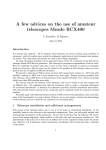
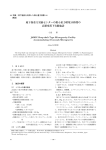
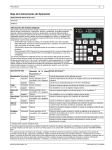
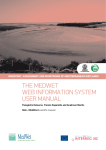

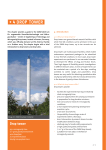


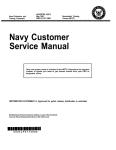
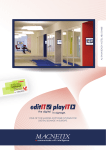
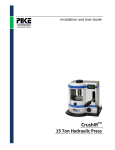
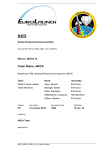

![SpeedAngle SA to KML Converter User Manual [April 2013]](http://vs1.manualzilla.com/store/data/005858940_1-650ff431a5d53db72218f3209001fa9f-150x150.png)

